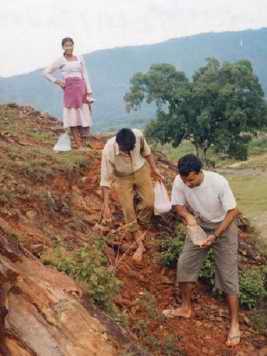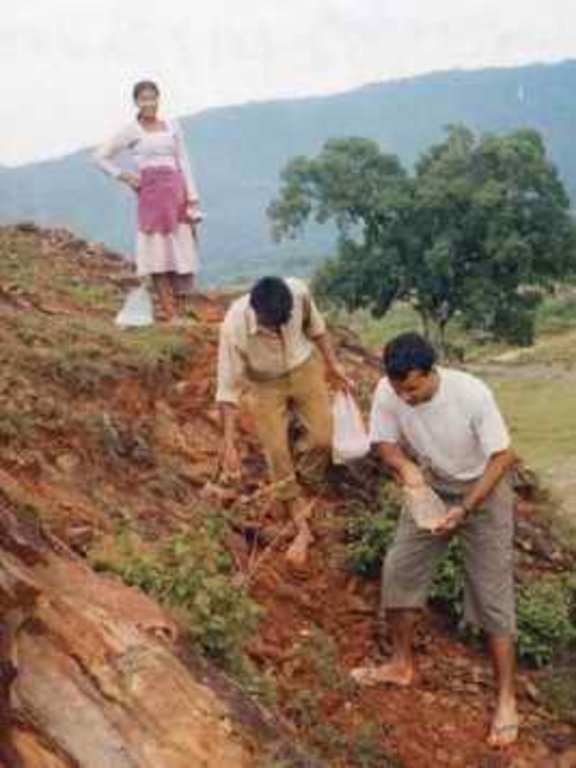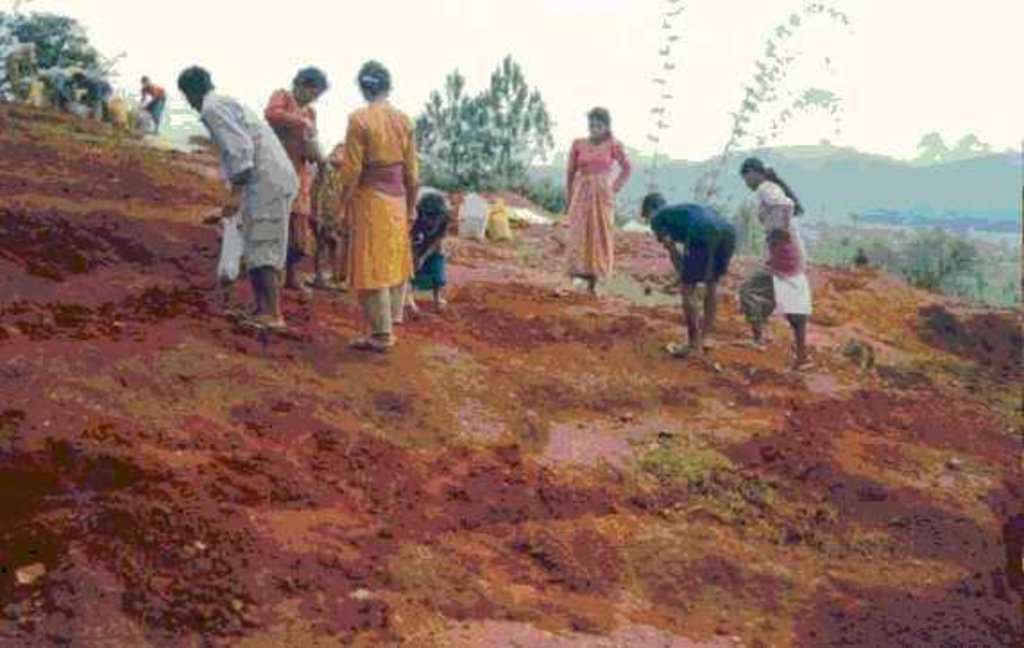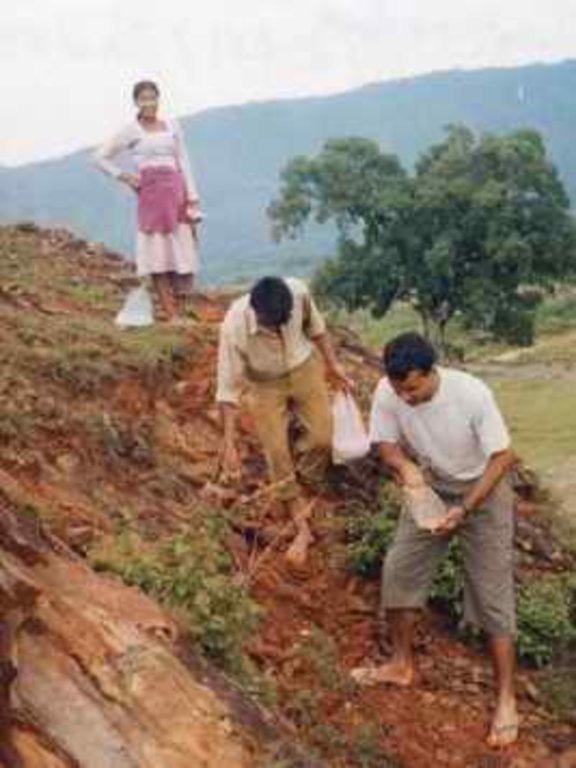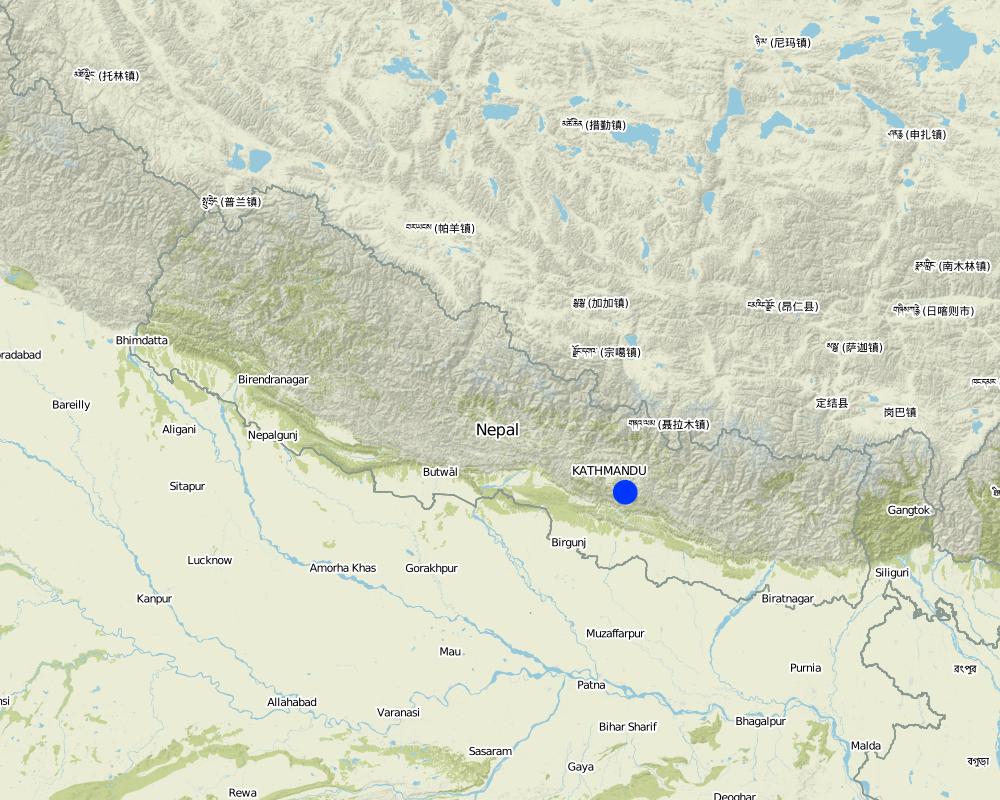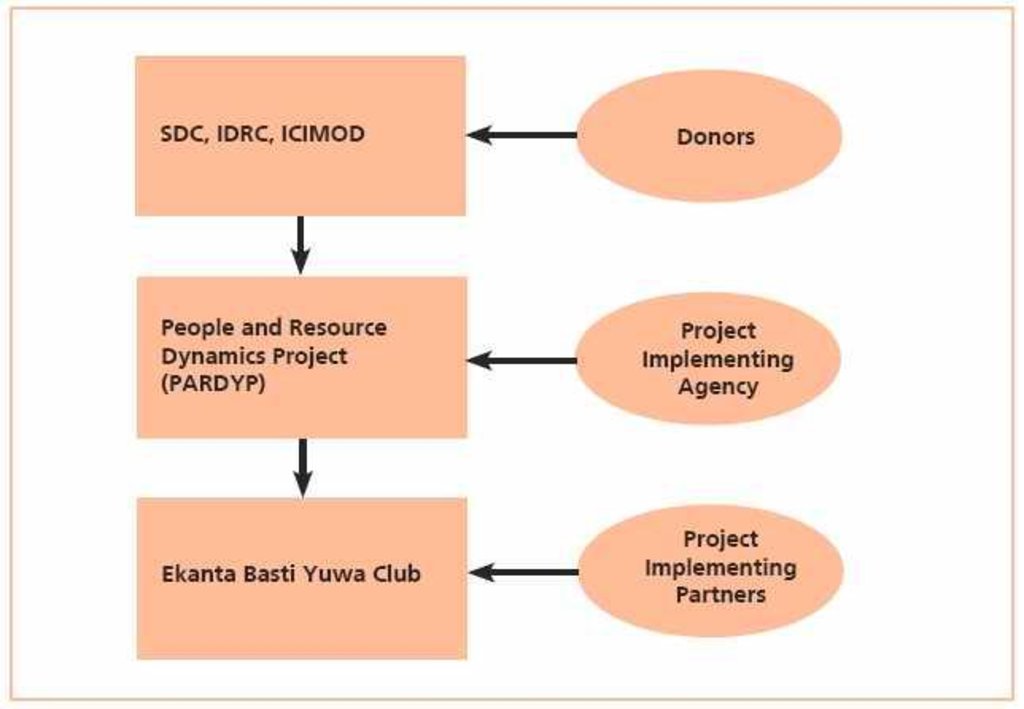Local initiatives for rehabilitating degraded communal grazing land [Nepal]
- Creation:
- Update:
- Compiler: Madhav Dhakal
- Editor: –
- Reviewer: Fabian Ottiger
Kshetigrasta samudayik charan bhumi punarutthan ma sthaniya agrasarata (Nepali)
approaches_2353 - Nepal
View sections
Expand all Collapse all1. General information
1.2 Contact details of resource persons and institutions involved in the assessment and documentation of the Approach
SLM specialist:
Name of the institution(s) which facilitated the documentation/ evaluation of the Approach (if relevant)
CDE Centre for Development and Environment (CDE Centre for Development and Environment) - SwitzerlandName of the institution(s) which facilitated the documentation/ evaluation of the Approach (if relevant)
ICIMOD International Centre for Integrated Mountain Development (ICIMOD) - Nepal1.3 Conditions regarding the use of data documented through WOCAT
The compiler and key resource person(s) accept the conditions regarding the use of data documented through WOCAT:
Yes
1.4 Reference(s) to Questionnaire(s) on SLM Technologies
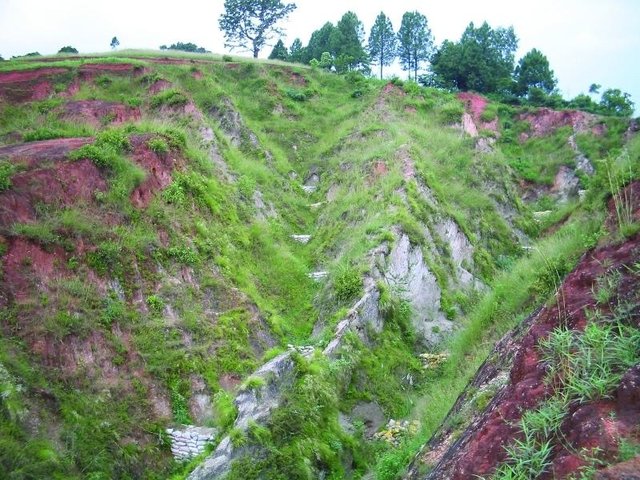
Gully plugging using check dams [Nepal]
Small dam structures constructed across erosion gullies
- Compiler: Nicole Guedel
2. Description of the SLM Approach
2.1 Short description of the Approach
Supporting local initiatives and building local capacity for the rehabilitation of degraded communal land in the middle mountains of Nepal.
2.2 Detailed description of the Approach
Detailed description of the Approach:
Aims / objectives: The main aim of the People and Resource Dynamics Project's (PARDYP) land rehabilitation activities were to help watershed residents, local groups, and line agencies understand the key issues and to test options for the improved management of water, land, and forests in a participatory way. In Dhotra VDC (Kavrepalanchok district) a local youth club (Ekantabasti Youth Club) had been trying to rehabilitate a 2.5 ha area of degraded communal land since May 2004. The club approached PARDYP for technical assistance. The area had been degraded by overgrazing with two big gullies formed and small landslips along the gullies affecting a trail and the adjoining agricultural land. An unsuccessful attempt had been made to plant the area eight years previously. It had failed due to the difficulty of retaining soil moisture in the area's compacted red soils. A series of meetings were organised to plan future activities, to ensure community participation, and to share responsibilities among local users and PARDYP. The community was committed to rehabilitating the area and took the responsibility for planting, protection, and overall management of the planted species. PARDYP provided planting materials and technical help. A needs assessment with the local people identified the most useful tree species. They entrusted the selection of appropriate grass and hedgerow species to the project's expertise. Project staff arrange for planting materials and logistical support, and showed villagers how to make eyebrow pits, plant hedgerows, and plug gullies. About 450 villagers participated in the rehabilitation activities with women contributing more than half of the labour. They worked four hours a day for 16 mornings.
Methods: A five-women strong user committee was formed to manage and protect the planted species and a five-man strong task force was set up to maintain regular links and coordination between the user committee, the youth club, and the villagers. The coordination committee, with guidance from the youth club, was responsible for facilitating and coordinating all the second season rehabilitation work in 2005.
2.3 Photos of the Approach
2.5 Country/ region/ locations where the Approach has been applied
Country:
Nepal
Further specification of location:
Kavrepalanchowk/ Jhikhu khola watershed
Map
×2.6 Dates of initiation and termination of the Approach
Year of termination (if Approach is no longer applied):
2005
2.7 Type of Approach
- project/ programme based
2.8 Main aims/ objectives of the Approach
The Approach focused on SLM only
- To demonstrate appropriate technologies for rehabilitating degraded land and evaluating their effectiveness. - To provide training on soil and water conservation (SWC) technologies for effectively implementing the rehabilitation activities and to build the capacity of the local community to carry out the work. - To organise and mobilise a local community for implementing, protecting and managing the planted areas and the physical structures
The SLM Approach addressed the following problems: - Lack of awareness about low cost soil and water conservation technologies that address farmers' needs. - Weak institutional collaboration for developing and implementing technologies
2.9 Conditions enabling or hindering implementation of the Technology/ Technologies applied under the Approach
availability/ access to financial resources and services
- hindering
Government incentives lacking
Treatment through the SLM Approach: Cost-effective technology demonstrated; planting materials and other logistic support provided
institutional setting
- hindering
Weak institutional collaboration for technology development and demonstration
Treatment through the SLM Approach: Collaboration with local youth club; formation of user committee and task force
legal framework (land tenure, land and water use rights)
- hindering
The existing land ownership, land use rights / water rights hindered a little the approach implementation The land is owned by the state and prior to starting the work there was a conflict over where the boundaries lay. Adjacent private landowners illegally claimed a part of the land but withdrew their claims before the rehabilitation work started. The existing land ownership and land use rights hindered the implementation of the approach at the beginning.
knowledge about SLM, access to technical support
- hindering
Limited knowledge of appropriate SWC technologies and limited technical know-how to implement them
Treatment through the SLM Approach: On-site training and exchange visits organised to demonstration sites
3. Participation and roles of stakeholders involved
3.1 Stakeholders involved in the Approach and their roles
- local land users/ local communities
Planning, implementing SLM activities and protection. Men and women worked equally. About 450 villagers participated in the rehabilitation activities. Women's participation was a little higher, they provided 56% of the labour.
- SLM specialists/ agricultural advisers
- NGO
Technical and logistics support
- national government (planners, decision-makers)
If several stakeholders were involved, indicate lead agency:
Initiation and implementation by local youth club representing land users. Technical and logistics support by national specialists
3.2 Involvement of local land users/ local communities in the different phases of the Approach
| Involvement of local land users/ local communities | Specify who was involved and describe activities | |
|---|---|---|
| initiation/ motivation | interactive | Local youth club approached PARDYP for technical help during a meeting. |
| planning | interactive | Public meetings organised to share responsibilities. Land users took responsibility for land preparation, planting, protection, grazing control, and overall management of planted species. Men and women performed planned activities together. Construction of eyebrow pits done mostly by men. Filling o |
| implementation | self-mobilization | Self-mobilised group under leadership of youth club implemented the activities; technical guidance during implementing period provided by project |
| monitoring/ evaluation | interactive | Survival of planted species, effect of eyebrow pits, performance of species and check dams were monitored/observed. Results shared in public meetings and reported to the project |
| Research | none |
3.3 Flow chart (if available)
Description:
PARDP project donors and implementing partners: SDC: (Swiss Agency for Development and Cooperation); IDRC (Internat. Development Research Centre); ICIMOD
Author:
Dhakal Madhav
3.4 Decision-making on the selection of SLM Technology/ Technologies
Specify who decided on the selection of the Technology/ Technologies to be implemented:
- mainly SLM specialists, following consultation with land users
Explain:
A local youth club (Ekantabasti youth club) has initiated rehabilitation activities on the degraded communal land since May 2004. The youth club approached PARDYP for the technical assistance.
Decisions on the method of implementing the SLM Technology were made by mainly by land users supported by SLM specialists. Villagers took the responsibility for planting, protecting, and overall management of the planted species. PARDYP arranged planting materials and technical support
4. Technical support, capacity building, and knowledge management
4.1 Capacity building/ training
Was training provided to land users/ other stakeholders?
Yes
Specify who was trained:
- land users
Form of training:
- demonstration areas
Subjects covered:
On-site training sessions were organised for establishing the eyebrow pits, contour hedgerows, gully treatments, and check dams and their maintenance.
4.2 Advisory service
Do land users have access to an advisory service?
Yes
Specify whether advisory service is provided:
- on land users' fields
Describe/ comments:
Name of method used for advisory service: Rehabilitation of degraded land thorough demonstration and training; Key elements: On site training, Demonstration, Exchange visits and public meetings; After implementing the technology, a number of exchange and interaction, audio visual presentation, and monitoring programmes were carried out as a scaling up strategy.
Advisory service is quite adequate to ensure the continuation of land conservation activities; Trained human resources can continue the activities.
4.3 Institution strengthening (organizational development)
Have institutions been established or strengthened through the Approach?
- yes, moderately
Specify the level(s) at which institutions have been strengthened or established:
- local
Specify type of support:
- capacity building/ training
Give further details:
Technical training was provided to local youth club.
4.4 Monitoring and evaluation
Is monitoring and evaluation part of the Approach?
Yes
Comments:
bio-physical aspects were ad hoc monitored through observations; indicators: soil type and texture
technical aspects were regular monitored through measurements; indicators: performance of planted species and their survival rates
socio-cultural aspects were ad hoc monitored through observations; indicators: preferred tree species and closing the area for grazing
economic / production aspects were ad hoc monitored through observations; indicators: seed and grass production
no. of land users involved aspects were ad hoc monitored through observations; indicators: participation in maintaining planted species and structures
There were no changes in the Approach as a result of monitoring and evaluation: The users increased the size of the eyebrow pits and dug new pits and extended the hedgerow lines to fill in gaps; but the overall approach was not changed.
4.5 Research
Was research part of the Approach?
Yes
Specify topics:
- technology
Give further details and indicate who did the research:
Research was not a major focus of the approach although the performance and survival rates of planted species, and performance of eyebrow pits and connecting drainage trenches were regularly observed.
Research was carried out on-farm
5. Financing and external material support
5.1 Annual budget for the SLM component of the Approach
If precise annual budget is not known, indicate range:
- < 2,000
Comments (e.g. main sources of funding/ major donors):
Approach costs were met by the following donors: international (SDC, IDRC, ICIMOD): 90.0%; local community / land user(s) (materials and tools for training): 10.0%
5.3 Subsidies for specific inputs (including labour)
- agricultural
| Specify which inputs were subsidised | To which extent | Specify subsidies |
|---|---|---|
| seeds | From projects own seed bank | |
| Seedlings | partly financed | Some locally arranged and some from forest departm |
If labour by land users was a substantial input, was it:
- voluntary
Comments:
Land users involvement was fully voluntary, they worked together in a cooperative spirit to improve their common degraded land.
5.4 Credit
Was credit provided under the Approach for SLM activities?
No
6. Impact analysis and concluding statements
6.1 Impacts of the Approach
Did the Approach help land users to implement and maintain SLM Technologies?
- No
- Yes, little
- Yes, moderately
- Yes, greatly
An organized land users' group was formed, and awareness on SLM increased.
Did the Approach improve issues of land tenure/ user rights that hindered implementation of SLM Technologies?
- No
- Yes, little
- Yes, moderately
- Yes, greatly
Project requested the users to solve the problem before rehabilitation work, users community and private land users solved the issue by measuring area of the community land. An authorized technician from the government office helped solving the issue.
Did other land users / projects adopt the Approach?
- No
- Yes, little
- Yes, moderately
- Yes, greatly
The approach adopted during rehabilitation activities is quite standard and is taken by many other land management and community development projects.
6.2 Main motivation of land users to implement SLM
- environmental consciousness
reduction of soil erosion
- aesthetic improvement
to maintain greenery.
6.3 Sustainability of Approach activities
Can the land users sustain what has been implemented through the Approach (without external support)?
- uncertain
If no or uncertain, specify and comment:
Land users planned to upscale the technology and its related approach to rehabilitate the degraded areas of their community forest but it hasn't happened yet.
6.4 Strengths/ advantages of the Approach
| Strengths/ advantages/ opportunities in the land user’s view |
|---|
| Suitable technologies were shared and valuable knowledge given during the rehabilitation work (How to sustain/ enhance this strength: Continue this incorporating new ideas) |
| Community institution strengthened, and some money (US$ 17) raised by selling grasses and grass seed within two years of rehabilitation. Money used for social activities (How to sustain/ enhance this strength: As above) |
| Strengths/ advantages/ opportunities in the compiler’s or other key resource person’s view |
|---|
| Site visits and focus group discussion meetings were effective for disseminating and scaling up the approach (How to sustain/ enhance this strength: Continue these initiatives on a regular basis to strengthen land users??? involvement in SLM activities) |
| Among total participants, women's participation was higher. User committee was made up of just women (How to sustain/ enhance this strength: Continue this) |
| The local youth club played a key role in rehabilitation activities - a key factor for sustainability and continuity (How to sustain/ enhance this strength: More local institutions should be identified and involved.) |
| This is a bottom-up approach with the rehabilitation activities purely demand driven. Farmers' priorities for tree species to be planted were identified in a participatory way (How to sustain/ enhance this strength: Continue by including new priorities) |
6.5 Weaknesses/ disadvantages of the Approach and ways of overcoming them
| Weaknesses/ disadvantages/ risks in the land user’s view | How can they be overcome? |
|---|---|
| Research was not a main focus of the activity, and not enough options were explored. | Explore and test more options |
| Weaknesses/ disadvantages/ risks in the compiler’s or other key resource person’s view | How can they be overcome? |
|---|---|
| Collaboration with government line agencies was lacking | Rehabilitation work should be carried out involving all main stakeholders |
7. References and links
7.1 Methods/ sources of information
- field visits, field surveys
- interviews with land users
7.2 References to available publications
Title, author, year, ISBN:
ICIMOD (2007) Good Practices in Watershed Management, Lessons Learned in the Mid Hills of Nepal. Kathmandu: ICIMOD
Available from where? Costs?
ICOMOD
Links and modules
Expand all Collapse allLinks

Gully plugging using check dams [Nepal]
Small dam structures constructed across erosion gullies
- Compiler: Nicole Guedel
Modules
No modules


